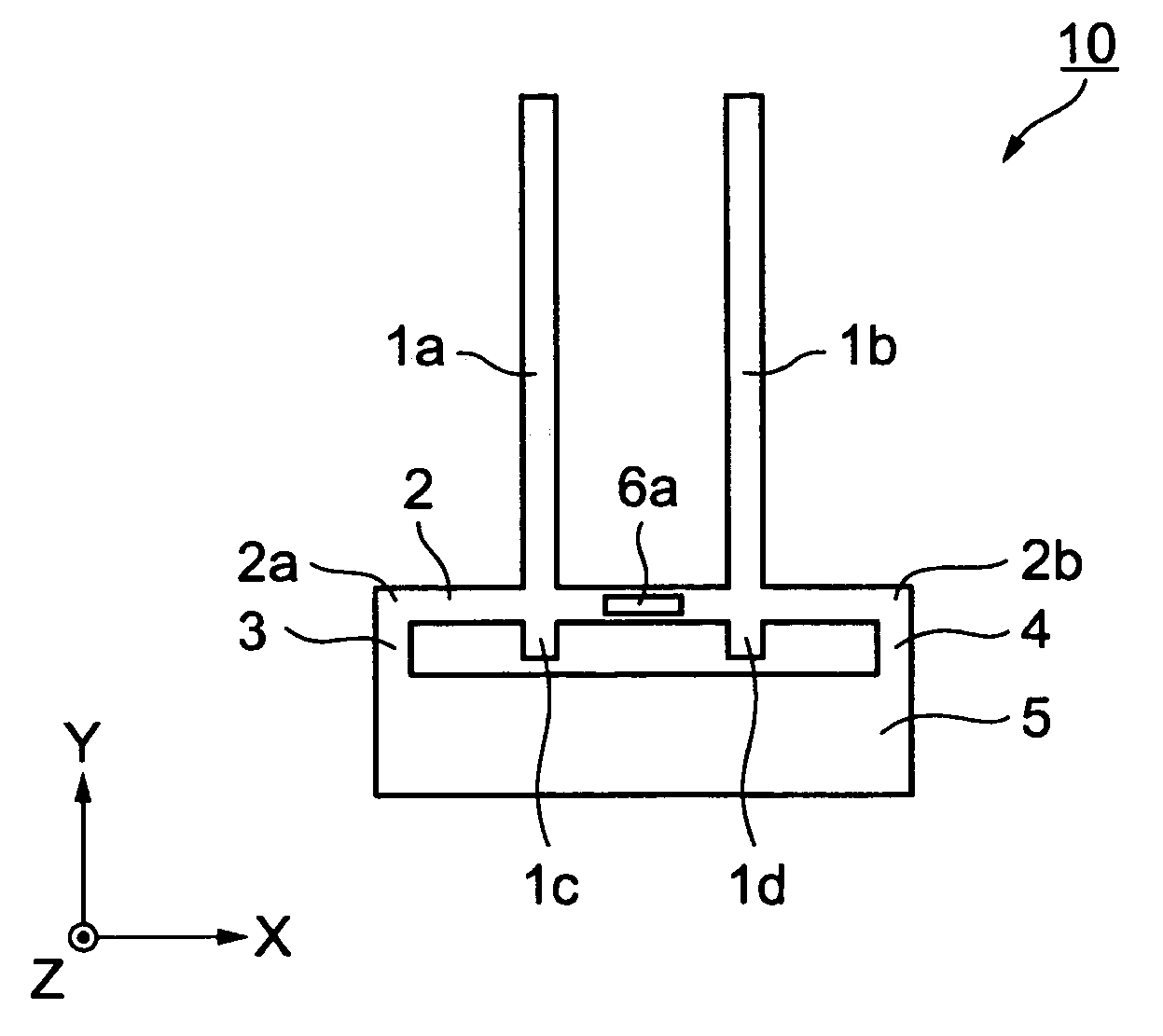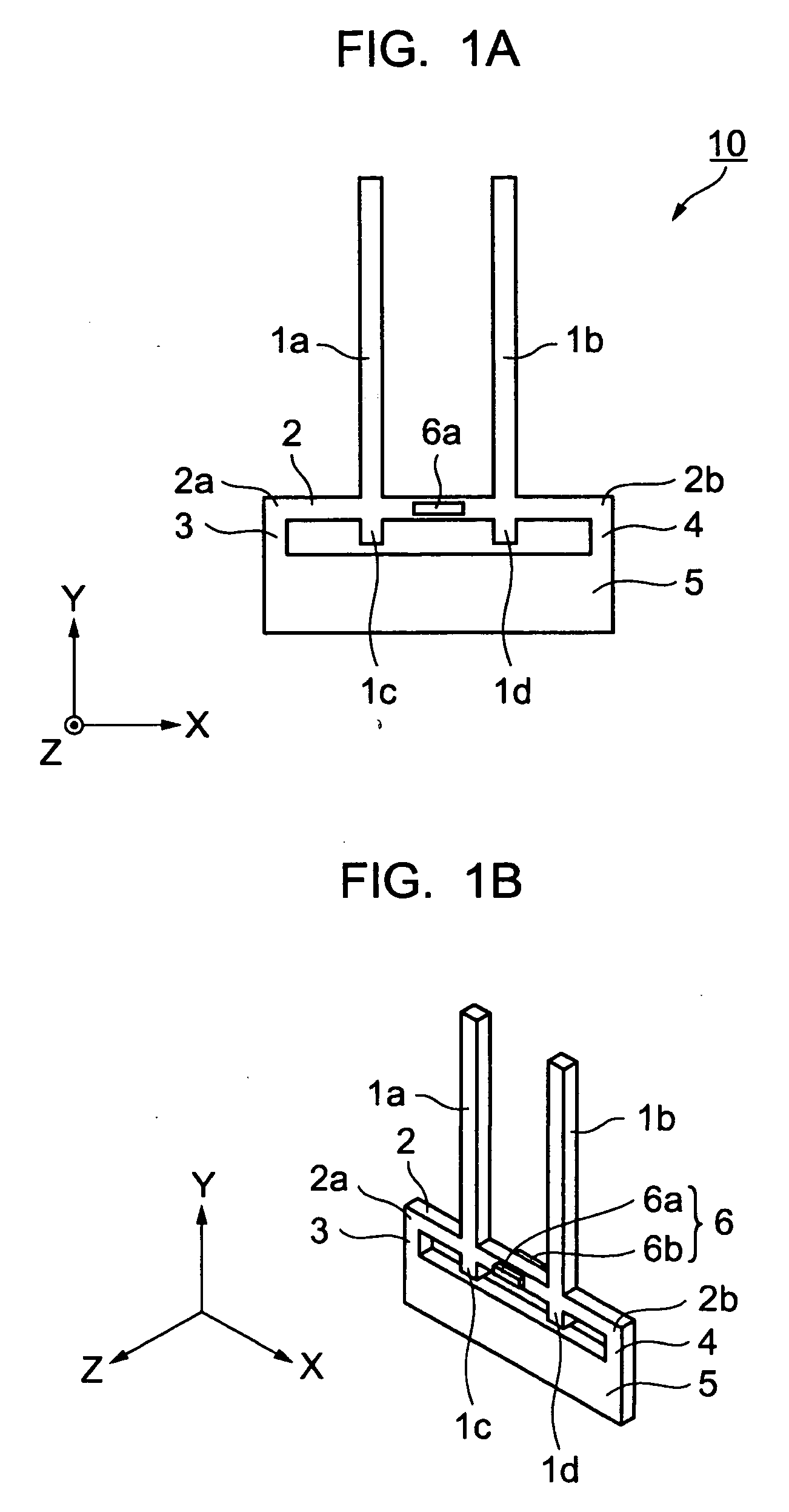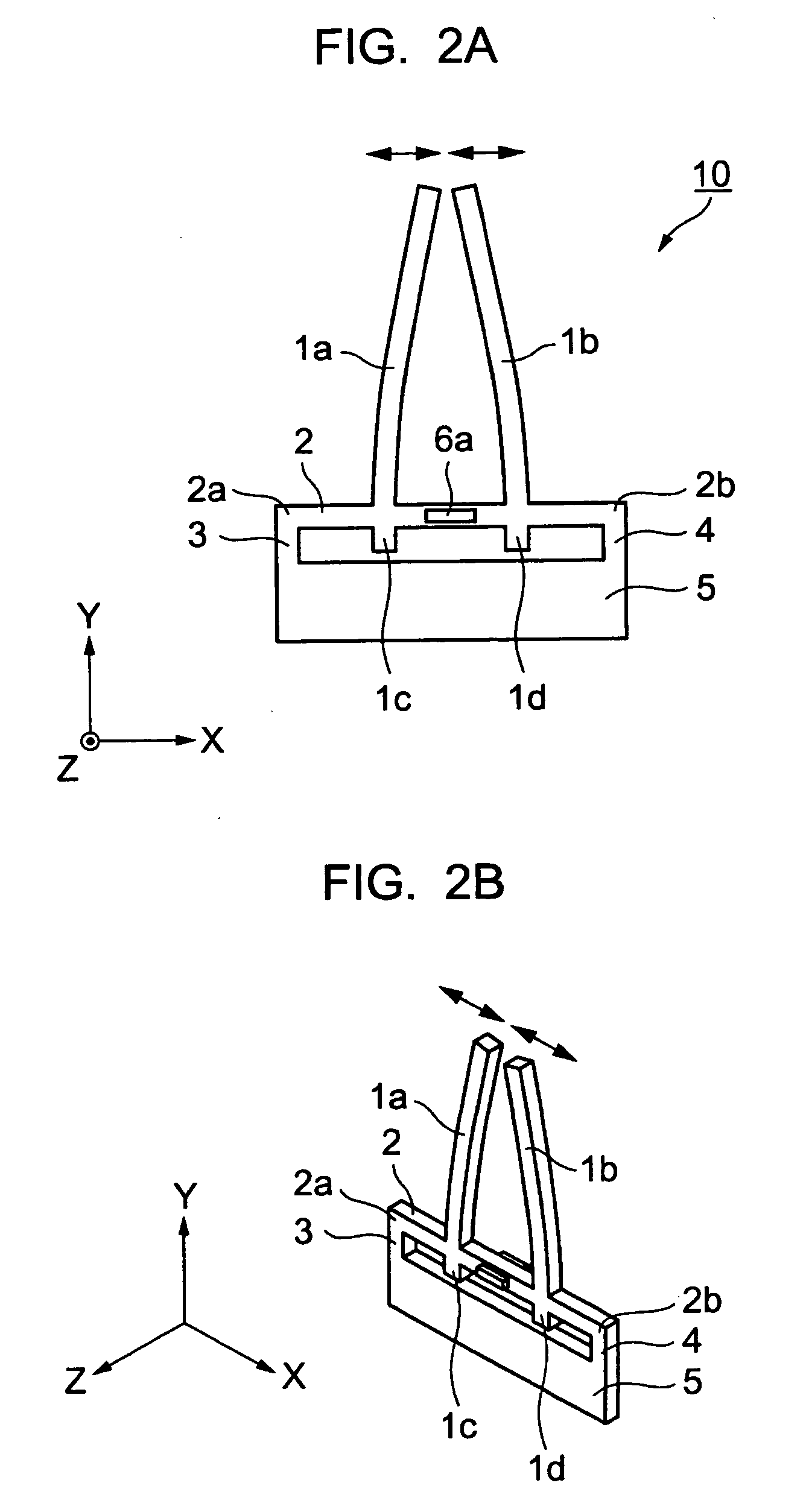Transducer, electronic equipment, and method of adjusting frequency of transducer
a transducer and electronic equipment technology, applied in the field of transducers, can solve the problems of difficult accurate detection of the rotation of the transducer, leakage of the base member, impaired oscillation, etc., and achieve the effect of increasing the adjustment mass, improving the process yield of the transducer, and increasing the frequency range of the adjustable rang
- Summary
- Abstract
- Description
- Claims
- Application Information
AI Technical Summary
Benefits of technology
Problems solved by technology
Method used
Image
Examples
exemplary embodiment 1
[0054]FIG. 1A and FIG. 1B are schematics showing a structure of a transducer according to a first exemplary embodiment. A transducer 10 according to the first exemplary embodiment generates oscillation to generate a Coriolis force corresponding to the rotation about the Y-axis (hereinafter “driving oscillation”) and oscillation to detect the rotation caused by the Coriolis force (hereinafter “detecting oscillation”). The transducer 10 generates the driving oscillation when in drive mode generates the detecting oscillation in detecting mode. In order to generate oscillation in both modes described above, the transducer 10 includes a pair of oscillating reeds 1a, 1b, a beam 2, a first connecting device (connecting member) 3, a second connecting device (connecting member) 4, a base member 5, and a detecting unit 6.
[0055] The pair of oscillating reeds 1a, 1b are rod-shaped members formed of crystal extending along the Y-axis in parallel to each other and having a predetermined length. ...
second exemplary embodiment
[0076]FIG. 5A, FIG. 5B, and FIG. 5C are schematics showing the structure of a transducer according to the second exemplary embodiment. A transducer 20 according to the second embodiment includes the pair of oscillating reeds 1a, 1b, the beam 2, the first connecting device 3, the second connecting device 4, the base member 5, and the detecting unit 6, as in the transducer 10 of the first exemplary embodiment, and a detecting unit 7, which is provided at a different point from the transducer 10 of the first exemplary embodiment. The detecting unit 7 includes detecting electrodes 7a, 7b having the same structure as the detecting electrodes 6a, 6b of the transducer 10 in the first exemplary embodiment.
[0077] The detecting units 6, 7 are provided at the point other than the portion between the pair of oscillating reeds 1a, 1b of the beam 2, and, specifically, the detecting unit 6 is provided between one end 2a of the beam 2 and the one oscillating reed 1a, and the detecting unit 7 is pr...
third exemplary embodiment
[0080]FIG. 6A and FIG. 6B are schematics showing the structure of a transducer according to the third exemplary embodiment, respectively. A transducer 30 in the third embodiment includes the pair of oscillating reeds 1a, 1b, the beam 2, the first connecting device 3, the second connecting device 4, the base member 5, and the detecting unit 6 as in the case of the transducer 10 of the first exemplary embodiment. The transducer 30 includes a third connecting device (connecting member) 8, which is different from the transducer 10.
[0081] The third connecting device 8 is a rod-shaped member formed of crystal extending in the Y-axis direction and having a predetermined length to connect the substantially center portion of the beam and the base member 5. Here, the distance d1 between one oscillating reed 1a and the third connecting device 8 and the distance d2 between the other oscillating reed 1b and the third connecting device 8 are set to values shorter than the distance d3 between one...
PUM
 Login to View More
Login to View More Abstract
Description
Claims
Application Information
 Login to View More
Login to View More - R&D
- Intellectual Property
- Life Sciences
- Materials
- Tech Scout
- Unparalleled Data Quality
- Higher Quality Content
- 60% Fewer Hallucinations
Browse by: Latest US Patents, China's latest patents, Technical Efficacy Thesaurus, Application Domain, Technology Topic, Popular Technical Reports.
© 2025 PatSnap. All rights reserved.Legal|Privacy policy|Modern Slavery Act Transparency Statement|Sitemap|About US| Contact US: help@patsnap.com



